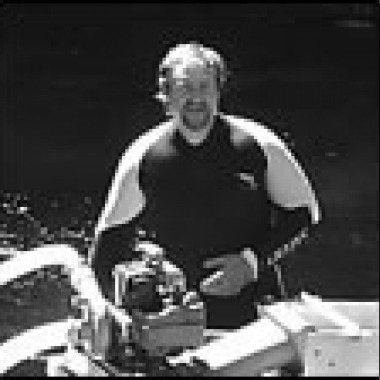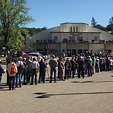Mining Summit
Hands-on at Iowa Hill
June 2011 by Chris Ralph
When we were considering what would make the our Prospecting and Mining Summit special, one of the most important things that we knew our readers wanted was to learn and increase their skills in prospecting. We had already scheduled some great lectures, but these were all conducted in a classroom-type environment. Even with good graphics and a projector screen you can only do so much. We knew that in order to really offer the full experience of training in prospecting for gold we had to get out in the field and dig. We needed to hold a “hands-on” field day out in the gold fields and get dirty. It wasn’t easy to find just the right place as there are entanglements with federal permits for conducting events on federal lands. We needed a place that could host a good number of people on private property, and it needed to be a place with good gold.With help from Don Robinson and the Mother Lode Goldhounds we were able to meet up with Goldhounds member Brian Bartholomew, the owner of a patented mining property near Iowa Hill, and his property manager, Brian Kuhl.
It was a fair drive from the show location in Placerville out to Brian’s mine, but the historic 65-acre mine site perfectly matched all of our needs. The area is a rich one, and has been producing gold continuously since the early days.
The Iowa Hill mining district in Placer County was a very productive area right from the start of the California gold rush. Mining began along the American River and its tributaries not long after Marshall’s first discoveries at Coloma in 1848. The early day miners soon discovered rich gravels high up on the hills in the old tertiary channels. Hydraulic and drift mining apparently began here around 1853, and by 1856 the weekly output was as high as $100,000—and this with gold valued at only $20 an ounce. By 1880, more than one million ounces of gold had been produced from the Iowa Hill area.

After hydraulic mining was outlawed, drift mining continued, and several area mines were worked through the early 1900s. There was appreciable activity when gold mining picked up again in the 1930s. Most of the old town buildings of Iowa Hill were destroyed by a fire in 1922, but in recent decades, a number of new residential homes have been built in the area.
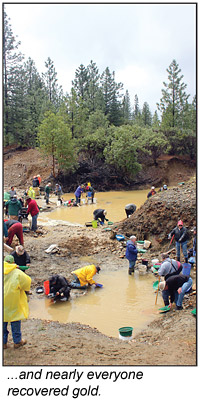
A branch of the main Tertiary channel of the American River crosses through the Iowa Hill area. There are numerous tributaries of the main channel as well as intervolcanic channels, including the Succor Flat intervolcanic channel, which comes in from the northeast, and the west-trending Morning Star and Grizzly Flat deep channels.
Many of the bottom gravels in the deep channels are well-cemented and required crushing to extract the gold. They were rich and yielded as much as half an ounce of gold or more per yard on bedrock in places. The lowest seven feet were normally the richest, but there were also some rich benches as well.
The bedrock is uneven, and consists of hard slate and phyllite of the Cape Horn Formation (carboniferous) and amphibolite. In places, the bedrock contains a number of deep and rich gold-filled potholes. There are also a few gold-bearing quartz veins in the district.
A couple of months before the event, we went out to take a look at the old mine, and I knew as soon as I saw it that it was just what we were looking for. The site was absolutely beautiful, with mountain views in every direction. Brian, the property owner, was very kind and willing to host our prospectors, so long as everyone knew it was a special one-time proposition, and this private property would not be open for use at other times. His mining site was right in the middle of one of the main Tertiary channels, and we could see there would be a lot of opportunities around the old pit for finding gold.
After viewing the site, we agreed the largest group we could possibly take in would be 200. There was limited parking space, and accommodating even 120 cars would be difficult, so we hoped some participants would agree to carpool. The situation was similar to the extreme interest we had at our lectures—we had hundreds more people interested than we had spaces available. We thought the hands-on field day was a good idea, but we had no idea there would be such a huge response to this part of the event. We wanted to be able to
 accommodate everyone who wanted to participate, but the list filled up far faster than anyone expected. In the end, we turned away nearly 400 people—which is no small number. Scott and I would like to personally apologize to those of you who wanted to attend this field training day and were disappointed to find that it was booked up. (One of the ideas we are exploring for next year is the possibility of additional hands-on training days so that we can accommodate all of those who would like to participate—we’ll see what we can work out.)
accommodate everyone who wanted to participate, but the list filled up far faster than anyone expected. In the end, we turned away nearly 400 people—which is no small number. Scott and I would like to personally apologize to those of you who wanted to attend this field training day and were disappointed to find that it was booked up. (One of the ideas we are exploring for next year is the possibility of additional hands-on training days so that we can accommodate all of those who would like to participate—we’ll see what we can work out.)It rained on us during the training day (Monday) until about noon, but the attendees were excited and didn’t let it bother them one bit. Most were well prepared for inclement weather with boots and jackets, rain slickers and the like. As we set up for the drive to the mine from our meeting point in Auburn, we had quite a train of vehicles. The participants were given maps and everyone followed the car in front of them. I took the duty of bringing up the rear and making sure everyone got there.
We were only about a third of the way to the mine when I came around a corner to see all of our folks turning down the wrong road! It seems that one of our participants was local and decided to stop off and conduct an errand on the way. Yep, everyone behind him blindly turned and followed down the wrong road. I didn’t know what to do, because they were in front of me and I couldn’t stop them. I pulled off and waited on the correct road, and a few of them came back after they realized that they’d taken the wrong road and followed me in the right direction. The rest eventually figured it out too.
The old hydraulic pit has a large amount of bedrock exposed, and gold can be found in many places along that surface. A number of crevices were still waiting to be cleaned out. A lot of the gold remaining in the pit was very fine sized, but a few small nuggets were also recovered. I think every single person in attendance found at least a little gold, though some did far better than others. From what I saw during the day, Alan Trees, our Gold Grabber vendor, did the best overall.
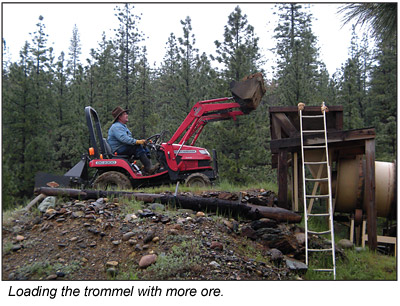
There were varying sizes and types of equipment for participants to practice with or see in action. From the simplest gold pan to excavators, trucks, trommels, jigs and high bankers—all the appropriate gold mining equipment was there to be seen and demonstrated. I had hoped to demonstrate dry washing, too, but it was far too wet and sloppy when the time came.
During the registration process, we asked folks what area of prospecting they were most interested in learning about during the hands-on training event. A large percentage of the attendees told us they wanted to learn more about metal detecting for nuggets. Many brought their own metal detectors, and we made sure we had knowledgeable people there for training for most major brands of detectors. Several nuggets were found with detectors during the event, and I photographed a nice 4-to-5-grain piece that was found with a detector that day. I will say that most of these old pits have a lot of old timer trash—square nails and the like. One of the keys here is to listen to faint targets. The big boomer targets can be gold, but if you are not listening to the fainter sounds, you will miss much of the gold, as it tends to be smaller in size.

Because of the rain that had fallen in the previous days, everything in the pit was muddy, and all of us who were there that day got a good amount of mud on our shoes and other clothing. Cars and trucks were no exception, and most of them were covered in mud as well. When they returned home, some of our prospectors took the time to pan out the mud they washed off their vehicles. It really was no surprise when most of them found a few flakes and specs of gold in the mud that came off their vehicles.
Several different types of high bankers, including some homemade units, were available for use at the training site. Attendees got a chance to take a close-up look at some larger scale equipment typical of small commercial operations. Brian, the property owner, fired up his commercial trommel plant and the attendees were very interested in how it operated. The folks from Vigilante Mining also brought in one of their trommel units—after about an hour of running it, the trommel they brought to the site was sold! No doubt it certainly was a very effective demonstration. When they stopped feeding and turned off the water, you could see the gold in their sluice box—there was visible gold even in the trough that led the material down into the sluice.
Just about everyone got some color. The weather improved as the day wore on, the rain eventually stopped, and we even got a little sunshine poking between the clouds. The end of the training came too quickly for many attendees—many were still happily digging away and we had to politely encourage them to pack up. We were certainly happy with the results for our first effort, though we ended up a bit short in covering costs, so we may need to increase the fee by a small amount next year.
We welcome comments or suggestions on the hands-on training day and/or the Summit. What did you like or dislike? What can we do to improve it for next year?
Comments can be sent by mail to:
Prospecting & Mining Summit
PO Box 2260
Aptos, CA 95001
Or by email to:
showcomments@icmj.com

Iowa Hill District
For the last two years we’ve held a hands-on prospectors training session in the Iowa Hill district of California’s Mother Lode country as a part of our Gold Prospecting and Mining Summit event. Because of this, I thought it might be good to take a look at the history, geology and opportunities that the Iowa Hill district still offers to the individual prospector.
Hands-on at Iowa Hill
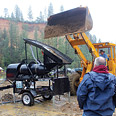 A number of crevices were still waiting to be cleaned out. A lot of the gold remaining in the pit was very fine sized, but a few small nuggets were also recovered.
A number of crevices were still waiting to be cleaned out. A lot of the gold remaining in the pit was very fine sized, but a few small nuggets were also recovered.
What Happened to The Gold Prospecting and Mining Summit?
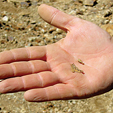 We continue to seek out a patented mining property with an owner who is willing to host such an event with a water supply and enough remaining gold to make it worthwhile for the students.
We continue to seek out a patented mining property with an owner who is willing to host such an event with a water supply and enough remaining gold to make it worthwhile for the students.
Our Readers Say
Comments Regarding our Gold Prospecting and Mining Summit in mid-May...
"What you did for us was very special...."
"Your patience with all of us is to be commended..."
"I learned a lot and hope to be back again next year...."
Vendors Announced for Gold Prospecting and Mining Summit
We are happy to announce the vendor/exhibitor spaces for the 2016 Gold Prospecting and Mining Summit in April are completely sold out. In fact, the venue has been sold out for several months.
ICMJ Gold Prospecting and Mining Summit Postponed
Subscription Required:
The Bawl Mill
• Dredge Mining—Current Situation in Idaho
• Fault Zones and Prospects
• What Are Those Rocks In My Pan?
• "Gold Rush: Alaska" in the Porcupine Mining District
• Wyoming's Billion Dollar Nugget—The Trilogy Ends
• Melman on Gold & Silver
• Mining Stock Quotes & Mineral and Metal Prices
Free:
Gold Prospecting and Mining Summit
• Legislative and Regulatory Update
• Good Research and Bad Luck

